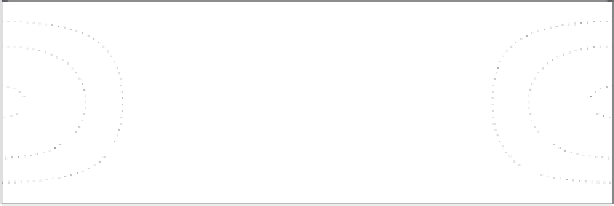Geography Reference
In-Depth Information
and the advection of planetary vorticity can be expressed as
−
βv
g
=−
βkA cos kx cos ly
The horizontal distributions of geopotential, relative vorticity, and advection of
relative vorticity for this case are shown in Fig. 6.8. For a disturbance with a fixed
amplitude of geopotential disturbance, the amplitude of the vorticity increases
as the square of the wave number or, inversely, as the square of the horizontal
scale. As a consequence, the advection of relative vorticity dominates over plane-
tary vorticity advection for short waves (L
x
< 3000 km), whereas for long waves
(L
x
> 10, 000 km) the planetary vorticity advection tends to dominate. Therefore,
as a general rule, short-wavelength synoptic-scale systems should move eastward
in a westerly zonal flow, whereas long planetary waves should tend to retrogress
geopotential height and vorticity
2000
1500
1000
500
0
-
2000
-
1500
-
1000
-
500
0
500
1000
1500
2000
x (km)
vorticity advection
2000
1500
1000
500
0
-
2000
-
1500
-
1000
-
500
0
500
1000
1500
2000
x (km)
(Top) Geopotential height in units of m, and relative vorticity in units of 10
−
5
s
−
1
for the sinu-
soidal disturbance of equation (6.20). Here
0
=
Fig. 6.8
10
4
m
2
s
−
2
,f
0
=
10
−
4
s
−
1
,f
0
A
5.5
×
=
800 m
2
s
−
2
,U
10
−
6
m
−
1
. (Bottom) Advection of rela-
tive vorticity in units of 10
−
10
s
−
2
for the disturbance shown above.
10 m s
−
1
, and k
=
=
l
=
(π/2)
×


























